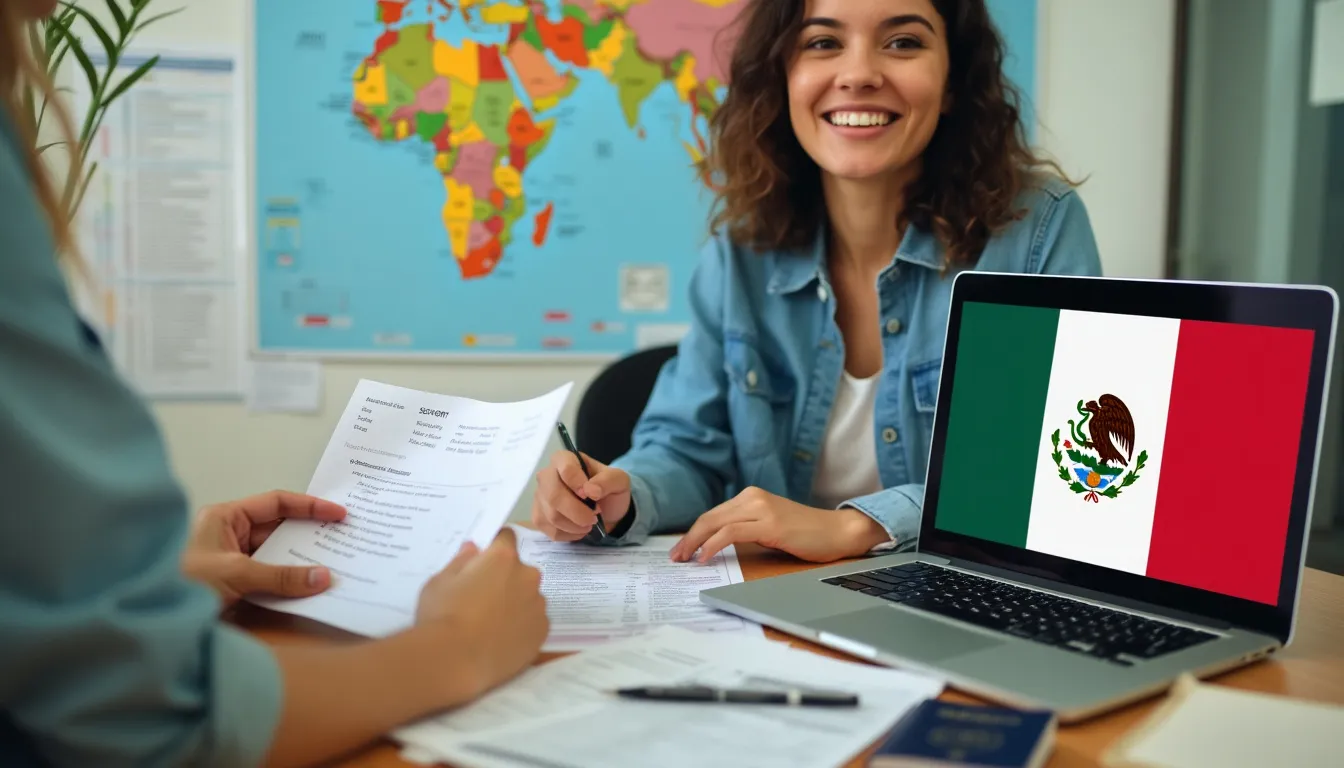Traveling to Mexico, whether for a leisurely beach vacation or a business trip, involves understanding specific entry requirements to ensure a smooth journey. One critical question travelers often ask is, Do you need a passport to travel to Mexico? The answer can vary based on the traveler’s nationality and the mode of transportation they choose. For U.S. citizens, a valid passport book is required for air travel into Mexico, while a passport card, enhanced driver’s license, or trusted traveler program card may suffice for entry by land or sea. It’s essential to recognize that different rules apply to foreign nationals from other countries, who may need a passport regardless of their entry mode.
Beyond passports, other valid travel documents such as passport cards or enhanced driver’s licenses can sometimes be used, specifically for those traveling by land or sea. Additionally, travelers need to be aware of the visa requirements that might apply, depending on the length of their stay and the purpose of their visit. For instance, certain scenarios may necessitate additional documentation or visas.
Preparation is key when planning a trip to Mexico. This involves knowing how to apply for or renew a passport, understanding the timelines, and assessing costs involved. It’s equally important to consider practical travel tips, such as registering with your embassy for safety, ensuring you have appropriate health insurance coverage, and adhering to recommended safety practices. By addressing these preparatory steps and understanding the entry requirements, travelers can enjoy a worry-free and memorable trip to Mexico.
Understanding Passport Requirements for Mexico
Do you need a passport to travel to Mexico?
Determining whether you need a passport to travel to Mexico largely depends on your nationality and your mode of entry. For US citizens, possessing a passport book is the best way to ensure seamless entry into Mexico. A standard passport book is generally required for air travel into numerous foreign countries, including Mexico. However, there are certain distinctions based on the traveler’s citizenship status and how they enter the country.
For US citizens entering Mexico via land or sea, passport cards, which are more affordable and smaller than passport books, may serve as valid documents. Other foreign nationals must check their country’s specific requirements, but in most cases, a passport book will be necessary regardless of the travel method.
Non-US citizens should consult their respective governments or the Mexican consulate to clarify their specific entry requirements. Visa prerequisites and potential exemptions may exist depending on bilateral agreements between Mexico and the traveler’s home country.
Entry Regulations by Transportation Mode
Air Travel
For air travel to Mexico, a passport book is mandatory for all travelers, including US citizens and other foreign nationals. Airlines and Mexican immigration officials require valid passports to facilitate your entry into the country. Having a valid passport book ensures you are prepared for various scenarios, including emergency scenarios requiring international travel.
Land Entry
Land entry into Mexico offers slightly more flexibility, particularly for US citizens. While a passport book remains the safest and most comprehensive travel document, US travelers can enter with a passport card. Enhanced driver’s licenses (EDLs) issued by certain US states also suffice for land crossings. Regardless, traveling with a passport book is advisable for extended stays or traveling further within Mexico, beyond the border zone.
Sea Entry
Similar to land travel, sea entry from the US to Mexico can accept either a passport book or a passport card. Cruise passengers arriving in Mexican ports may use a passport card for entry, though again, carrying a passport book is beneficial. The majority of cruise lines strongly recommend passengers hold a passport book, ensuring they can board flights on short notice in emergencies or change travel plans within or outside Mexico.

Passport Alternatives and Acceptance Criteria
Valid Travel Documents
When asking, do you need a passport to travel to Mexico?, it’s crucial to consider the range of alternative documents that might suffice for your journey. U.S. citizens and certain other nationals have multiple options available that are recognized by Mexican authorities for land and sea entries, though air travel typically mandates a traditional passport. Let’s dive into these alternatives.
Passport Cards
A U.S. passport card serves as a valid identification for U.S. citizens when entering Mexico by land or sea. More affordable and convenient than a full passport book, passport cards offer a wallet-sized solution for travelers who frequently traverse borders via car or boat. However, do note that these cards are not viable for air travel, where a traditional passport book remains a steadfast requirement.
Enhanced Driver’s Licenses (EDLs)
Enhanced Driver’s Licenses are another solid alternative. Currently issued in states like Michigan, Minnesota, New York, Vermont, and Washington, EDLs function not only as driver licenses but also as border-crossing documents for valid U.S. citizens. An EDL incorporates proof of U.S. citizenship, making it a recognized document upon entry to Mexico by land or sea. However, like passport cards, EDLs cannot be used for air travel.
Trusted Traveler Program Cards
For frequent travelers enrolled in programs like NEXUS, SENTRI, or FAST, Trusted Traveler Program (TTP) cards offer a streamlined border-crossing experience. These cards are particularly advantageous at designated land points of entry. Program-specific requirements vary, but TTP cards stand as a government-recognized proof of identification and citizenship effective for land and sea travel to Mexico. Yet again, these do not cover air travel requirements.
Visa Requirements
While the passport and its alternatives provide the foundational documentation, certain travelers might need to secure additional permission to enter Mexico, depending on the nature and length of their visit. Understanding these visa requirements can significantly impact your trip planning.
Tourist Visa (FMM)
Mexico’s Tourist Visa, commonly known as the Forma Migratoria Múltiple (FMM), is often required for stays longer than a week. U.S. citizens and many other travelers do not need a visa for tourist visits under 180 days, but they must fill out the FMM form. Conveniently, this form can be completed online before your trip or obtained upon entry. The FMM stipulates your intended activities in Mexico and does not extend to working or studying.
Work and Long-term Visas
For those planning to engage in employment, volunteer activities, or a long-term stay, a different visa type is necessary. The Temporary Resident Visa permits employment in Mexico and is valid for stays exceeding six months up to four years. Applicants for this visa generally need to prove employment offers, financial stability, and other specific documentation. Processing these visas involves both Mexican consulates and immigration offices within Mexico, so advance planning is vital.
Student Visas
Students intending to study in Mexico will also require a specific student visa. Once admitted into an academic institution, the student visa process begins with the issuance of an acceptance letter from the Mexican school. Similar to work visas, student visa applicants must demonstrate proof of financial resources or a scholarship ensuring their support during their studies. The student visa is valid for up to one year and can be renewed as needed.
Entry for Specific Nationalities
While U.S. citizens enjoy relatively relaxed entry requirements, other foreign nationals should check Mexico’s visa policies for their country of citizenship. Nationals from many countries do need a visa to enter Mexico, even for short tourist visits. It’s imperative to research and understand the specific prerequisites from the Mexican consulate or embassy applicable to your nationality.
In summary, understanding the complexities surrounding valid travel documentation and visa requirements is essential for hassle-free travel to Mexico. As you plan your journey, ensure that you meet all necessary criteria, and consider alternative forms of identification where applicable, but stay cognizant of the specific demands of your travel mode. Regularly checking updated policies from reliable sources, such as consular websites, ensures you’re well-prepared and compliant with Mexican entry regulations.

Preparing for Your Trip to Mexico
Application Process
If you find yourself pondering the question, do you need a passport to travel to Mexico, and conclude that you do need one, here’s a comprehensive guide to help you navigate through the passport application or renewal process. Applying for a passport may seem daunting, but understanding the steps involved will ease your experience.
Step 1: Gathering Documentation
To kickstart your passport application, you’ll need to gather essential documents. These include proof of U.S. citizenship, such as a birth certificate or a naturalization certificate, and a government-issued photo ID like a driver’s license. Also, remember to have photocopies of each document as they’ll be required during the application process.
Step 2: Complete the Application Form
For new applications, you’ll need to fill out the DS-11 form, whereas renewals typically require the DS-82 form. These forms are available online or at any post office or passport agency. Ensure that you fill in the details accurately to avoid any delays.
Step 3: Get Your Passport Photo Taken
Your passport photo must meet specific requirements, including size and background color. You can get your photo taken at various locations such as pharmacies, post offices, or professional photo studios. Always verify that the photographer knows the U.S. passport photo requirements.
Step 4: Submit Your Application
Next, you’ll need to submit your application in person if it’s a first-time application. You can do this at a passport acceptance facility like a post office or a designated government building. For renewals, you generally have the option to mail your application. Include all necessary documents, your passport photo, and the appropriate fee.
Step 5: Pay the Fees
The fee for a standard passport book for adults (16 years and older) is approximately $145, including the application and execution fee. Passport cards, which are less expensive, cost about $65. It’s advisable to check the latest fee structure on the official U.S. Department of State website, as fees are subject to change.
Step 6: Wait for Processing
Standard passport processing usually takes about 4-6 weeks. If you need your passport sooner, expedited services are available for an additional fee, typically shortening the timeframe to 2-3 weeks. In emergency situations, you can also seek an appointment at a regional passport agency.
Essential Travel Tips
Planning a trip to Mexico can be exhilarating, and while ensuring you have the right documentation is paramount, there are additional steps you can take to ensure a smooth and enjoyable journey.
Register with the Embassy
One prudent step is to register with the U.S. Embassy in Mexico through the Smart Traveler Enrollment Program (STEP). This free service allows you to receive important information from the embassy about safety conditions and enables the U.S. embassy to assist you in case of an emergency.
Health Insurance Considerations
Though it’s not mandatory, having travel health insurance can provide significant peace of mind. U.S. health insurance typically does not cover medical expenses incurred abroad. Check with your existing health insurance provider or consider purchasing a travel insurance plan that includes health coverage.
Safety Tips
While Mexico is a beautiful country with rich culture and welcoming people, it’s crucial to stay informed about any travel advisories. The U.S. Department of State regularly updates travel advisories concerning Mexico, specifying regions where extra caution is needed. Some general safety tips include:
- Avoid carrying large amounts of cash and flashy jewelry.
- Stay in well-populated areas, especially after dark.
- Use reputable transportation services, such as certified taxis or ride-sharing apps.
- Keep copies of important documents, such as your passport and travel itinerary, separate from the originals.
- Be cautious with your personal information and avoid sharing travel plans with strangers.
Local Customs and Etiquette
Understanding local customs can improve your travel experience. For example, greetings in Mexico often involve a handshake or a kiss on the cheek. Additionally, Mexicans appreciate polite and respectful behavior. Learning a few basic Spanish phrases can also be very helpful and is generally well-received by locals.
Currency and Payments
The official currency in Mexico is the Mexican Peso (MXN). It’s advisable to carry some local currency for small purchases, although credit cards are widely accepted in most tourist areas. ATMs are conveniently located but be mindful of potential transaction fees and exchange rates.
In sum, it’s essential to comprehend the requirements and preparations needed for a seamless trip to Mexico. Addressing legal paperwork early, adhering to health and safety guidelines, and respecting local customs will ensure you have an enriching and hassle-free travel experience.
Traveling to Mexico offers a rich cultural experience, but understanding the entry requirements is crucial for a smooth journey. In conclusion, whether you need a passport to travel to Mexico largely depends on your nationality and how you plan to enter the country. U.S. citizens traveling by air are required to present a valid passport, while those entering by land or sea can alternatively use a passport card, an enhanced driver’s license, or specific trusted traveler program cards. International travelers from other countries must generally have a valid passport to enter.
While passports are the most universally accepted form of identification, it’s essential to recognize that there are valid alternatives. Enhanced driver’s licenses and passport cards serve as practical options for certain travelers. Additionally, depending on the duration and purpose of the visit, some travelers may need to secure a visa. Ensuring you have the appropriate documentation in advance can prevent unnecessary complications at entry points.
Preparation is key for a trouble-free trip. If applying for or renewing a passport, consider starting the process well ahead of your travel date to avoid any delays. The application process involves steps such as completing forms, providing photos, and paying fees, typically taking several weeks.
Beyond documentation, travelers should also focus on safety and health precautions. Registering with the nearest embassy, securing adequate travel insurance, and staying informed about local conditions are all recommended steps. By adhering to these guidelines, you can ensure a safer and more enjoyable experience when traveling to Mexico.







